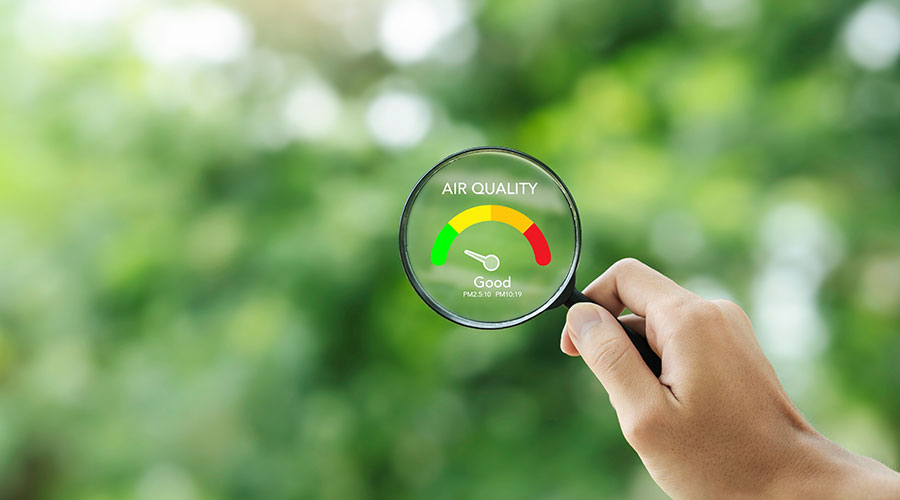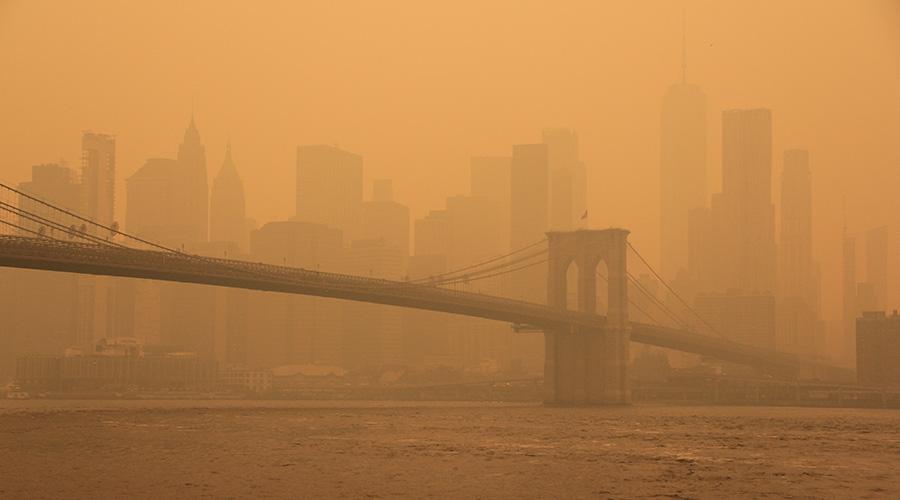Clear Choices on Air Filters
Taking two essential steps — determining design intent and establishing accurate specifications — will lead managers to filters that improve indoor environments
These days, a growing range of sources offer information on air filters for commercial and institutional buildings. This growing attention is understandable, given the importance of indoor air quality (IAQ) in the design and operation of today’s buildings and the major role that filtration plays in maintaining an acceptable indoor air environment.
Technical organizations and HVAC equipment manufacturers are devoting significant resources to IAQ in buildings where people live and work. Engineering and maintenance managers must understand not only the importance of filtration on IAQ but also how to apply available filtration technology in the most cost-effective ways for their buildings.
Establishing a Framework
It is important for managers and building owners to communicate and agree on the objectives of a filtration system in a building’s HVAC systems. A manager is obligated to ensure that the filtration system’s design is based on current codes and standards. ASHRAE Standard 62 on IAQ mandates a minimum efficiency for filters in most buildings. Appendix S of Standard 62 requires that filters with a minimum efficiency reporting value (MERV) rating of no less than 6, or 25 percent efficiency, be used upstream for all cooling coils or other condensate-producing devices.
In health care applications, the American Institute of Architecture guideline or the new ASHRAE design manual for hospitals and clinics establishes minimum filtration efficiencies for these and other health care facilities. These minimum standards are established to protect equipment and to create an acceptable indoor environment.
Managers also should be aware of these industry standards and codes, as should the engineer who designs the filtration system for specific physical dimensions and configurations, pressure drop and efficiency criteria.
An engineer must decide on which filter-pressure drop to use in static-pressure calculations when sizing a fan motor. Some engineers use an average pressure drop between clean and dirty, while others use the dirty-pressure drop. This can add 1/2-1 inch to the fan static pressure. If the dirty static pressure drop is used in the fan static calculation, there should be a means to adjust the airflow when new filter media is installed.
Specification Considerations
Too often, building operators don’t know or ignore some or all of these criteria when ordering replacement filters. And in some facilities, the purchasing department orders air filters without regard to the performance criteria for the original filter design.
For example, some buildings report a policy under which purchasing agents responsible for acquiring filter media receive bonus pay based solely on money saved from the previous year’s budget. The organization established no minimum standards to guide the agents in acquiring the filters, so they purchased filters that were significantly less efficient and that had a lower standard than filters for which the system was designed.
In one case, a 30-percent filter replaced a specified 90-percent filter. And, a 12-inch deep, 90-percent cartridge filter was purchased with one-half the media square footage called for in original specifications. Obviously, this generated false savings, since the filter had less than one-half the life of the originally specified filter.
Facilities sometimes use inexpensive, 1-inch, flat throwaway filters to replace filters originally specified as 2-inch-deep, pleated media with 30 percent efficiency. Usually, savings generated from such substitutions are not truly realized. The less expensive filters often require more frequent changes, have higher pressure drops than the specified filters and result in more frequent cleaning of coils, fans and ductwork. Less efficient or effective filters also can lead to increased complaints related to indoor air quality, occupant dissatisfaction and building-related sickness.
A Closer Look at Media
Particulate filters are just one type of filtration used in today’s buildings. Managers also must be aware of criteria for locating outside air intakes for HVAC systems and the related filtration issues. If outside air intakes are located adjacent to loading docks, parking garages, alleys, boiler stacks or other such structures, managers will need to consider gas-phase filtration to address the resulting contaminants. Gas-phase filters use adsorptive materials, such as activated-carbon filters or potassium permanganate filters.
Electronic filters or filter-enhancement devices, which charge the air particles, include bipolar ionization or high-frequency electrical-field devices. Each of these devices requires expert assistance for proper application but might be necessary in many buildings, due primarily to the location of outside air intakes close to sources of contaminants.
Research continues in synthetic materials used as filter media. Several companies have introduced charged media, which promotes filters with higher efficiencies and smaller pressure drops. Obviously, some controversy accompanies with this new media. One current issue faced is the length of time the charge lasts and the filter efficiency after the charge has dissipated. ASHRAE 52.2 is being revised to test filters with the new charged media. The 52.2 test will introduce dust particles that neutralize the charge on the media so specifiers can compare filters on an equal basis.
Steps to Success
To improve air-filter maintenance, managers should consider the following steps:
Determine design intent. First, determine the design intent of the HVAC filtration system. The design intent should establish filter types — particulate filters, gas-phase filters, order control, etc. — filter efficiencies, MERV ratings, clean and dirty filter-pressure drops, minimum media square footage, filter depths, filter housings, and fan static-pressure calculations.
Managers in older facilities who do not have easy access to the original specifying engineer will need to establish the filtration-design intent. Consult with an engineer or a filter manufacturer to learn the current issues, and evaluate the current filtration-replacement program based on design intent.
Changes to the current configurations might be warranted. For example, new filter housings might be beneficial in reducing leakage around and between filters and frames. More efficient filters might require adjusting fan speeds or even replacing motors. The goal is to create an acceptable indoor air environment, and it is worth allocating money to upgrade existing systems.
Review purchasing specifications. Managers should establish purchasing criteria for new filter media that conforms to the design intent. Ensure that all filter vendors have the same information regarding required pressure drops and efficiencies before submitting their proposals.
Require each vendor to visit the facility to avoid blind quotes. Vendors need to understand systems and customize their proposals to meet the facilities’ exact needs.
Select a vendor. Managers should consider each vendor’s proposals for filter life, pressure drop — i.e., energy costs — and filter media. Often, managers call filter vendors and place an order for specific media. In such cases, a vendor is unlikely to know if the requested media is commensurate with the originally specified media.
Select a vendor that is knowledgeable about current codes and standards. A vendor unfamiliar with ASHRAE 62 will be unaware of the many IAQ issues facing today’s buildings. Managers should make sure to purchase expertise, not just filter media.
Energy and total costs for filter replacement often are $0.70-1.80 per person per month, according to one industry source. This statistic is valid for a wide range of filtration efficiencies, and the cost is relatively insignificant compared to the costs associated with building occupants, such as salaries, rent and health insurance.
So it pays to know the original design intent of the filtration design and to follow that design intent as closely as possible. If significant changes occur in the use of a building, managers must re-evaluate the design intent and change or adjust it to meet the needs of the building and its occupants.
The importance of air-filtration design and maintenance cannot be overemphasized. Filtration maintenance is more than just protecting equipment. It is an integral component in creating and maintaining an acceptable indoor environment. The costs of establishing and following the filtration design intent are worth it.
Testing, Testing: MERV Versus ASHRAE
SHRAE Standard 52.2 is the newest standard for air-filter testing. The standard deals with testing based on particle size, compared with efficiency testing in Standard 52.1.
Standard 52.2 focuses on minimizing health risks from particulate matter. ASHRAE 52.2 establishes minimum efficiency reporting value (MERV) parameters for each filter. The table below shows a comparison of the MERV rating and ASHRAE 52.1 efficiency testing:
| |
Standard 52.2 |
Approximate Standard 52.1 |
|
| |
(MERV) |
Dust Spot |
Arrestance |
| |
15 |
>95% |
NA |
| |
14 |
90-95% |
>98% |
| |
11 |
60-65% |
>95% |
| |
8 |
30-35% |
>90% |
| |
6 |
<20% |
85-90% |
|
|
Related Topics:











